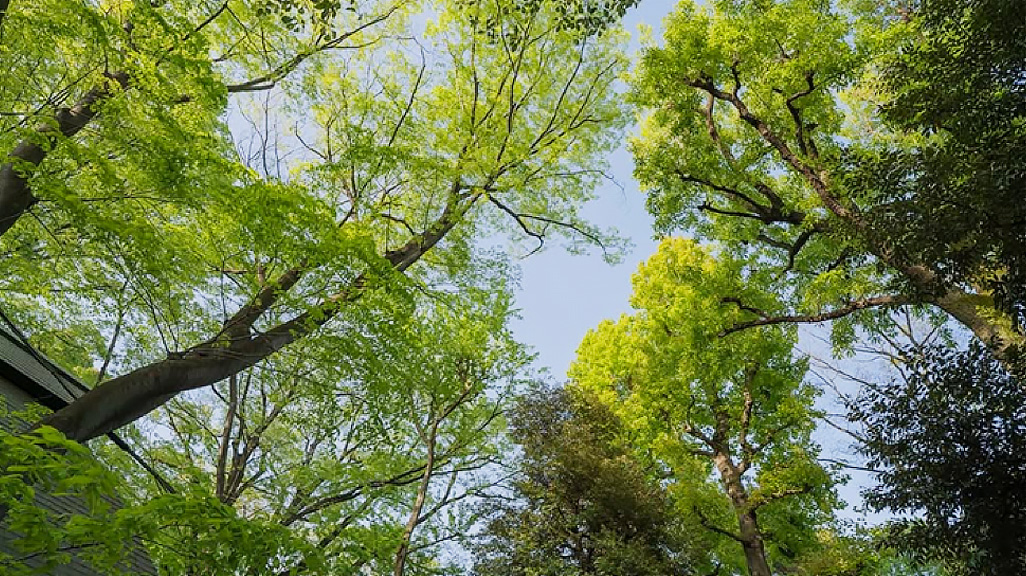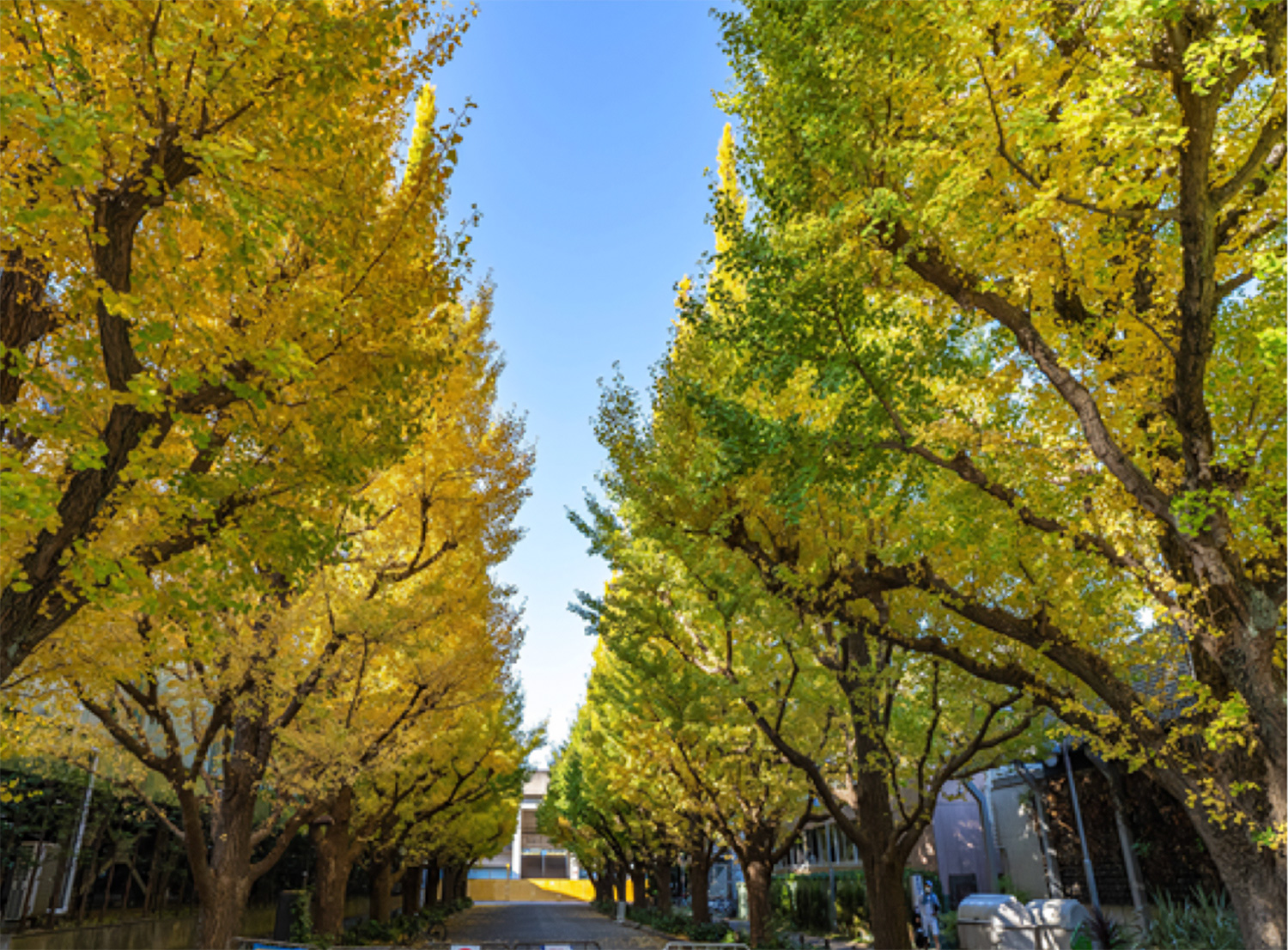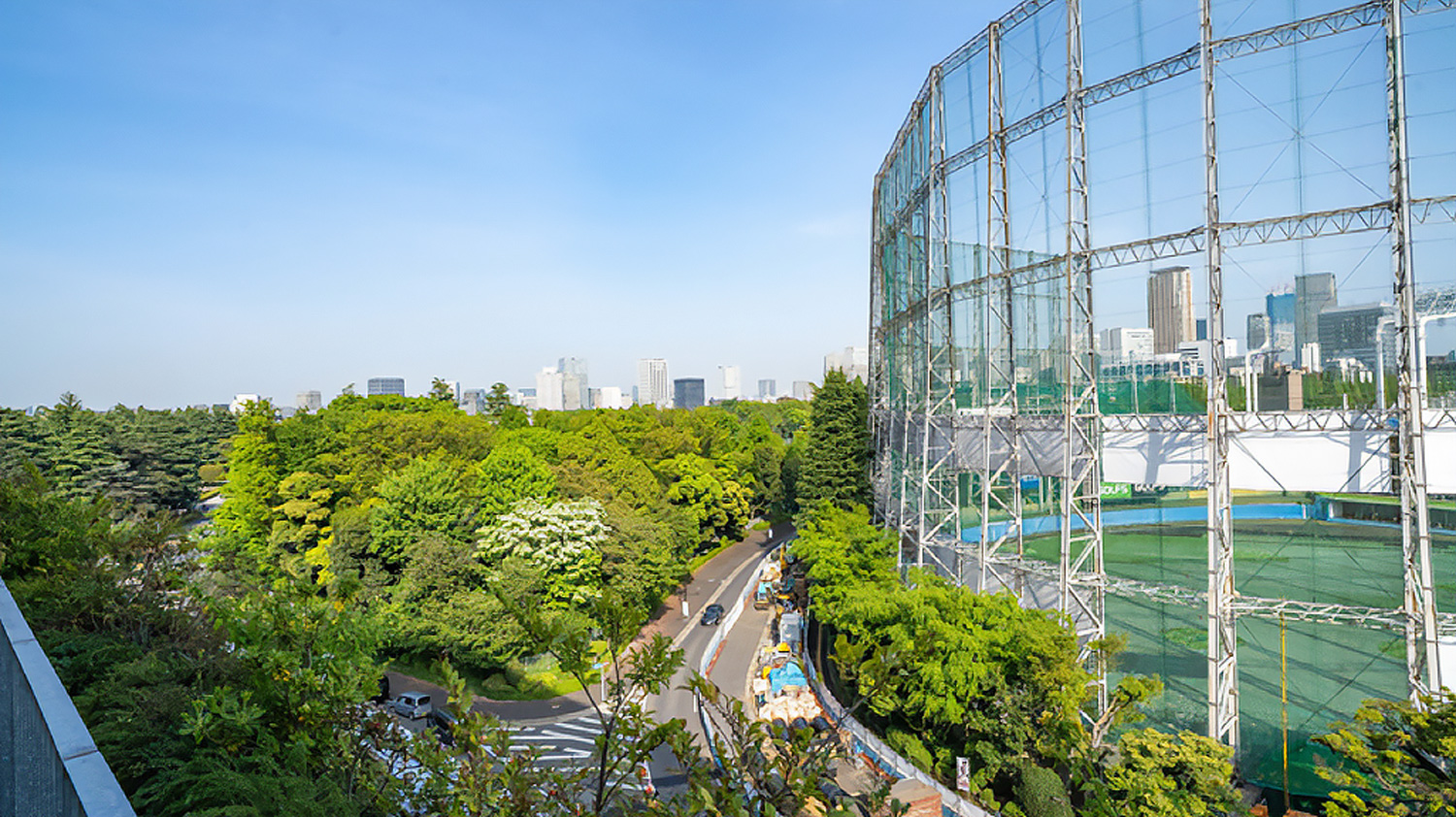Issue:
January 2025
The media and its corporate allies have helped obscure the true impact of the Jingu Gaien project

The Jingu Gaien redevelopment plan was formally announced in early 2022, after no prior consultation with residents. There were rumours of early involvement by Dentsu, the advertising giant implicated in the 2020 Olympic scandal; former Prime Minister Yoshiro Mori was supposedly involved in trying to persuade Meiji Shrine to come on board. Such early negotiations were hidden from public view.
Opposition to the Jingu redevelopment plan struggled to get media coverage until Sakamoto Ryuichi’s death, when a letter was posthumously published asking Tokyo’s governor, Yuriko Koike, to rethink. Having a famous name on your side is rare in Japan, where few celebrities speak out on social or political issues.
Sponsors wield influence over content. While early coverage on mainstream television explored the issue in some detail, especially on Asahi TV and the TBS BS channel, subsequent coverage has been more muted. Developments have been covered in a flat, factual way; simple news without deeper investigation. Pressure from above and self-censorship are likely involved.
Some media reports have chosen to follow the narrative presented by the developers and Tokyo Metropolitan Government (TMG). Any mention of the term rokyuka, meaning decrepit or decaying, quickly stifles questioning. But the older Koshien stadium in Kansai has been renovated. Regular rebuilding is common in Japan … think Ise Shrine.
Meiji Shrine’s ownership of the land has also been misreported, on the assumption that it has the right to develop the land as it chooses and use profits from the Outer Garden plan to help upkeep the Inner Garden around the shrine. The Gaien area was created with citizens’ donations and labour. What was then public land was later sold to Meiji Shrine, far below market value, due to the separation of state and religion after World War II. The sale included a stipulation to manage it to provide sports and relaxation facilities for the people.
Mitsui Fudosan’s advertising talks of “creating a sports cluster”. Well, the two stadiums are already there and could still be renovated without the disruptive scrap and build approach, but the area where local children currently enjoy soccer and softball will be lost, along with other low-cost sports facilities. An exclusive members-only tennis club is planned instead. No complaints have come from the Japan Sports Council or the Education Ministry that oversees it.
As for the trees, while the developers claim that the four rows of celebrated gingko trees will be undamaged, the fate of 18 of those magnificent trees, on a side section leading to the present rugby stadium, has been sidestepped. Initially it was clearly stated that these trees would be felled, possibly turned into benches, but after an outcry, developers said they would transplant the trees where possible, a highly questionable prospect at best.

It is also claimed, soothingly, that there will be “even more trees” after the redevelopment, in a one-for-one calculation. This ignores a key fact; older trees store much more CO2. The new saplings in the plan will require years of growth to match this. It also ignores ecology, the interdependence of trees and other species. The new Olympic stadium already involved the sacrifice of 1,500 trees, and some new saplings planted there are struggling to survive Tokyo’s summers in an area offering very little shade. In shameless greenwashing, both Mitsui Fudosan and Itochu trumpet their ESG and SDG credentials.
In terms of global warming, the size of the tree canopy is vital, protecting lower trees and plants while reducing CO2 emissions, which the arborists who developed the Inner Garden of Meiji Shrine understood. and also used in the Outer Garden to create the National Foundation Library Forest. Sadly, permission has already been granted for the removal of two-thirds of this jewel of a mature forest, along with trees over 3 metres from the nearby 2nd stadium to accommodate the new rugby stadium.

Allowing for new hotels near the stadium was the rationale given for changing building height regulations in parkland with hitherto strict limits, leading to a plan that includes high rise buildings - big earners of course, but potentially causing wind issues and blocking sunlight from the iconic avenue of trees that the Tokyo government advertises as a star tourist attraction. This method of encroaching on park areas, using Private Finance Initiatives (PFI), already abandoned in the UK, is promoted nationally by the Land Ministry.
Further manipulation was involved when the Jingu Gaien plan, originally involving five bodies, was altered to include only four, meaning it could be categorized as a “private development” and require less stringent oversight than a larger public development. Also surprising is an environmental assessment system under which assessment is carried out not before, but after a project has been authorised, with the process carried out by the developers themselves in a rubber stamp operation where objections in committee stage were steadfastly ignored.
Koike publicly insists the project is a private one concerning Meiji Shrine and the developers, but the reality is that TMG are equal partners, working for and with the developers in a top-down relationship with citizens. The most that Koike has done is to request cosmetic changes. The bureaucrats ignored an alternative plan, involving renovating the stadiums in situ, and removing only one tree.
Mitsui Fudosan, the leader of the project, reportedly employs around ten ex-TMG planning department officials as advisors, no doubt helping to smooth the way. Questions arise on how contracts are approved and awarded, including the upcoming massive development of the old Tsukiji Market area. But how deeply are the local media able to investigate these amakudari relationships?
Developments in Kasai Rinkai Koen, Hibiya Park and elsewhere involve further loss of greenery. Meanwhile, the CO2 produced by trashing existing buildings doesn’t seem to be factored into the city’s emission reduction goals for 2050; nor are the huge emissions produced by large building projects. Many media reports fail to cover this and the need for more shade-producing trees to offset Japan’s blisteringly hot summers. There seems to be a hangover of thinking from the bubble years of constant growth through new construction, and an inability to address the serious changes ahead.
This whole controversy relates to issues with local government finances nationwide as populations fall, and to future needs in the growing climate crisis. Can private companies be trusted to work in the interests of citizens? Can local governments learn to consult effectively before imposing development plans that disrupt local environments? Will Shinjuku and Minato Wards exercise their rights to stop tree felling in the areas they control? Can residents protesting the plans expect any satisfaction in ongoing court cases that move slowly, even as large trees are being removed? Will Tokyo manage to reduce its carbon emissions? Could foreign investors put pressure on companies like Itochu? Can Japanese media be depended on to engage more vigorously, dig deeper and hold government and corporations to account?
Recent years have seen forced retirements and wrist-slapping of reporters who overstep the mark in questioning officials. Foreign media can play a role in pushing issues into the limelight – witness the Johnny Kitagawa scandal which only moved from being an open secret thanks to a BBC documentary. The world needs strong and independent news media to navigate these challenging times, and Jingu Gaien’s “redevelopment” is no exception.
Marian Hara is a freelance writer on health, the environment and human rights.

